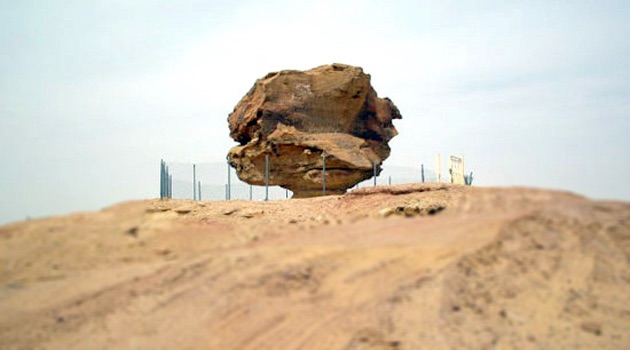4 Arabic’s Influence in the Region
Alam Payind and Melissa McClimans

This section seeks to convey the importance of Arabic as a language which came to be spoken far beyond its place of origin, and which also gained influence on a large geographical area through the conquest of Islam. We also seek to address a unidimensional view of Arabic as the only linguistic influencer of the region. Indeed, Greek and Persian both had significant impacts on Arabic, both conceptually and in the form of many borrowed words. The major powers of the area when Islam came into being, the Eastern Roman, or Byzantine Empire, and the Sasanian Empire, spoke Greek and Persian respectively.
Arabic forms an initial basis for understanding many of the most important concepts shared by members of the larger Muslim umma, or Muslim community, within many diverse cultural communities. For example, the word sunna. A revered word when used in the context of the Prophet’s Sunna. Before the prophet sunna was a path worn into the sand, hardening the sand with perpetual use. It came to stand for tradition. In Bedouin culture, the nomadic culture of the Arabian Peninsula, such paths were very important, as unknown territory could be deadly. Over time, the word may have stopped emphasizing the original cultural reference, but it has kept the meaning of correct path. The term Sunni, as in Sunni Muslims, means those who are following the right path; in this case, the path refers to the traditions of the Prophet.
Arabic and many aspects of Arab culture spread worldwide through Islam; one could justifiably consider early Islamic conquests, Arab conquests. Before Islam, there was a vibrant literary culture in the Arabian Peninsula. The Ka’aba, now known for being the global center for pilgrimage, was already a pilgrimage site, and the place where the best poems were displayed or “hung”. One of the masters of these “Hanging Poems” was ‘Antara, and his poetry depicted a love relationship with ‘Abla. The picture on the previous page is supposed to show the rock they used as a meeting point in his poetry.
‘Antara’s significance lies in the significance of pre-Islamic Arab society. The language of the Qur’an refers to that cultural milieu a great deal, and many of the early Arab cultural practices inform Islamic concepts. Thus, remnants appear in Islamic law, religious and social practices, aesthetics, etc., in Muslim communities, regardless of whether they are native speakers of Arabic.
The cultural connections between Arabic and Islamic make it exceedingly easy to conflate “Arab” and “Muslim”. The largest Muslim-majority country in the world, and the fourth most populous country worldwide, Indonesia, is neither Arabic-speaking (as mother tongue), nor in the Middle East. As we pointed out in the Introduction, the Middle East is only a small portion of Muslims worldwide, and only 16 of the 25 countries in our geographical definition of the Middle East are Arab-majority countries. Thus, Arab-majority countries are all within the Middle East (according to our definition), but not all Middle Eastern countries – or Muslim-majority countries – are Arab (Israel is Jewish-majority).
There is some validity to the connection between Arab identity and Islam, however. The Qur’an is in Arabic; and the Sunna, or the authenticated accounts of the prophet’s words and actions, are in Arabic. Thus, the terminology in non-Arabic-speaking, Muslim-majority countries for them is in Arabic. Most Muslim-majority countries also have adopted the Arabic script, as well (Turkey is a notable exception). Standard Islamic expressions, such as the greeting, es-Salamu ‘Alaykum, or, Peace Be Upon You, remain in Arabic, regardless of cultural context.
Arabic was much less influential beyond the Arabian Peninsula and the Syrian Plateau prior to the advent of Islam. When Islam began, the Arabian Peninsula was flanked by two superpowers of Eastern Roman, or Byzantine Empire, and the Sassanid, or Sassanian Persian Empire. Greek was the predominant language of the former, Persian the latter. There is evidence that both Greek and Persian influenced early Arabic. Persian culture also influenced Greek culture (Miller, 2004). Thus, the exchange was multi-directional prior to Islam. Related map: “Indo-Sassanid” by Guillem d’Occam, via Wikimedia Commons: http://commons.wikimedia.org/wiki/File:Indo-Sassanid.jpg
Relics of the time before Arab dominance reside in the Arabic of the Qur’an and some remain in the language today. Persian-speaking and Greek-speaking super powers flanked the Arab communities (see map, right) that originally spread the language of Arabic, along with the religion of Islam. And those influences are apparent in many of the words, along with older semitic languages, such as Aramaic and Syriac. According to linguist and Arabic historian Kees Versteegh, there were borrowings from Persian, Greek, and Aramaic in the Qur’an and in pre-Islamic poetry. Some examples include (Versteegh,2001,p.60):
- the word for rose, warda, which came originally from Avestan Persian, vareda
- the word for money, or ‘silver coin’, dirham, originally from the Greek, drachme’
- the word for mosque, or masjid, originally from the Aramaic/Nabatean msgd’

Photo by Melinda McClimans, All rights reserved.
